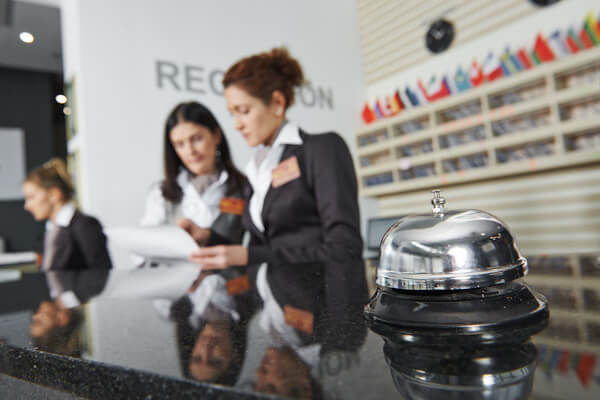Hotel Email Marketing: 6 Ways to Get More Responses
Creating response-worthy email marketing messages is a valuable skill for hotel marketers. Responses equate to directly attributable revenue – direct bookings, upgrades, amenity purchases, and more. They can also drive engagement, develop a rapport with past guests, and make them more likely to book again in the future.
But what makes an email likely to get a response?
Boomerang, a Gmail app that schedules send and email reminders, conducted research to see which factors result in the most email responses. Not all emails involved were marketing emails – some were sales emails and internal communications. But there are some great takeaways for email marketing, too. Here are the basic points that are relevant to hotel marketers:
1. Write like a 3rd grader
The Boomerang study found that emails written at a 3rd-grade reading level performed best. This reading level has a 36% and 17% higher response rate over emails written at a college reading level and high school reading level, respectively.
Of course, this will depend on what guest segment you’re targeting when composing an email. Think about who your guests are. For example, if you’re located next to Harvard University like The Charles Hotel, your database is likely comprised of people coming to town for events related to one of the United States’ top universities. It’d be a good idea to elevate your writing.
Otherwise, 3rd-grade level is a good default. One of my favorite free tools to test the grade level and readability of a piece of writing is the Hemingway App.
2. Write with emotion
Another big factor in response rates is how positive or negative the words in the message are. Boomerang found that emails that were slightly to moderately positive or slightly to moderately negative provoked 10-15% more responses than neutral emails.
Translation? When talking to your guests, flattery works but up to a certain point. Response rates for positive emails with a slightly warm tone were about 15% higher than neutral emails. After that, response rates declined as the amount of positive language exceeded what would look “normal” in an email.
As a side note, for hotels, we don’t recommend using negative emails for marketing purposes. It might work for some businesses, but in general, hospitality should stick to positive sentiment.
Boomerang found this with Sentiment Analysis – a tool similar to what Revinate uses in its hotel reputation data analysis. Here’s how it works: Sentiment analyzers assign a “sentiment score” that ranges from -1 (completely negative) to 1 (enthusiastically positive), with 0 representing a completely neutral email. To give you context, here’s what some positive emails look like:
- Hey, I was thinking about you earlier. Do you want to get pizza?
True 0.0 neutral. A little positivity would boost the response rate. - Hey, I’d definitely like to get together next week. Do you want to get pizza?
Positive 0.35 sentiment. Perfect! It’s easy to add positive sentiment to an email – this is all it takes. - Hey, it would be really great to see you and catch up. Do you want to get pizza?
Positive 0.55 sentiment. This will also work better than a neutral email, even if it is not as well-written as the version above. - Hey! It would be absolutely wonderful to see you! Do you want to get pizza? I’m so excited!
Over 0.9 positive sentiment. This email would be about as effective as a neutral email – not bad, but not optimal.
Testing the sentiment of your hotel’s emails takes more work than calculating the reading grade level. Your best bet for evaluating the sentiment of your hotel’s email campaigns is up to your own judgment.
3. Keep it short (but not too short!)
According to the Boomerang study, the optimal email length is between 50-125 words, which yields response rates above 50%. Again, note that these are not marketing-specific emails, but the takeaway is the same – be brief and on-point. Less text in your email body means people will be more likely to click through.
4. Use short (very short) subject lines
Testing subject lines is a critical step in designing an email marketing campaign that will have a high open rate. Likewise, the length of your subject line impacts response rates, and the optimal length is shorter than the researchers at Boomerang expected. Subject lines with only 3-4 words received the most responses. It’s also important to note that including some sort of subject line is critical. Only 14% of messages without any subject line at all received a response!
5. Try using questions
In the body of your marketing emails, it may be worth your while to try asking questions.Emails that ask 1-3 questions are 50% more likely to get a response than emails that ask no questions.
How might this work for hotels? Say a hotel in Colorado wants to send an email to guests who stayed at the hotel in the past winter during peak ski season. It’s now summer, and they offer golf, whitewater rafting, horseback riding, and more. An email to guests who stayed in the winter for a ski trip could look something like this:
Hi [Guest Name],
We are so glad you enjoyed your time skiing with us, but we were curious: What do you like to do in the summer?
The email could include links and photos to package deals and summer activities the hotel offers.
6. Experiment with subjectivity
If your natural writing style consists mostly of facts, consider including more opinions and subjectivity. The more opinionated the content of the email, the higher the response rate climbed.
Of course, it’s best to use the Bartender Rule of Thumb – avoid specific or alienating opinions on sensitive subjects like religion, sports, and politics. For example, send a special offer to repeat guests who are staying at the hotel during the NBA finals. Drum up excitement about the game, but remember it may be risky to align yourself with a certain team.
But this is an opportunity to make your brand stand out in a crowded inbox full of boring objective emails. Think about some ways you can take a stand in a harmless way.
Best practices
In summary, these are the best practices to help your hotel’s email marketing messages more likely to get a response:
- Use shorter sentences with simpler words. A 3rd-grade reading level works best.
- Try including a question in your email.
- Make sure you include a subject line. Aim for 3-4 words.
- Use a slightly positive tone, which outperforms a completely neutral tone.
- Take a stand. Opinionated messages see higher response rates than objective ones.
- Write enough, but not too much. Try to keep messages between 50-125 words.
Want to drive more direct revenue and connect with guests? Download our free Email Marketing Strategy Guide. Never before has there been a more jam-packed, industry-specific guide to help hoteliers master the art (and science) of email marketing. Over 40+ topics with actionable insights, strategies, and best practices for email marketing.
Related Posts

Insights that drive results
Subscribe now to get the latest content
This site is protected by reCAPTCHA and the Google Privacy Policy and Terms of Service apply. *Required fields.




